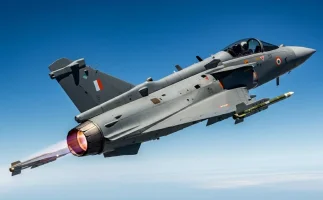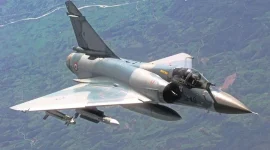- Views: 3K
- Replies: 14
India must adopt modern strategies, including hiring international experts and acquiring existing technologies, to successfully develop the crucial 120kN engine intended for its future Advanced Medium Combat Aircraft (AMCA), according to Anshuman Tripathi, an international aerospace and defence consultant and former adviser to the National Security Advisory Board (NSAB).
Speaking recently, Mr. Tripathi stressed that learning from global precedents and India's own experiences is vital to accelerate the development timeline for this critical defence project.
Mr. Tripathi used the example of Nokia, a former mobile phone leader overtaken by Apple, to illustrate his point. He recalled the words of Nokia's last CEO, who reportedly stated, "We didn’t do anything wrong, but somehow we lost."
Mr. Tripathi suggested a parallel with India's persistent efforts in jet engine development, particularly by the Defence Research and Development Organisation's (DRDO) Gas Turbine Research Establishment (GTRE).
Despite dedicated work, India has yet to produce a fully operational indigenous jet engine for fighter aircraft. "Everybody put in their best, but we don’t have what we need," he observed, calling for a fundamental change in strategy.
Highlighting how other nations secure advanced capabilities, Mr. Tripathi pointed to China's development of its J-20 stealth fighter. He noted that China achieved this not primarily through government deals or reverse engineering alone, but by recruiting Nosher Gawadia, an engineer with experience in U.S. stealth technology.
"China didn’t rely on reverse engineering alone; they hired the right person and gave him resources," Mr. Tripathi explained, emphasizing the effectiveness of acquiring talent.
He reminded the audience of India's own past success with the HF-24 Marut fighter, developed with the expertise of German designer Kurt Tank in the 1960s. Mr. Tripathi advocated for a similar strategy today, urging India to actively recruit global talent. This includes reaching out to experts of Indian origin working abroad on advanced projects like the F-35, who may be willing to return and contribute to India's defence capabilities.
Mr. Tripathi also highlighted a significant missed opportunity during the 2021-2022 period when ATP Aero, a Spanish company possessing a Eurofighter Typhoon manufacturing facility, was acquired by Bain Private Equity. He pointed out that this facility, capable of producing aerospace components including engines, could have significantly boosted India's capabilities, but India did not attempt to acquire it.
He lamented the absence of suitable private equity structures or infrastructure within India to facilitate such strategic technology purchases and called for establishing mechanisms to acquire key technologies, benefiting not just defence but wider industry.
Acknowledging the difficulties GTRE and DRDO face in retaining skilled engineers who often move to the private sector, Mr. Tripathi proposed creating a framework to attract global experts.
This system should facilitate collaboration between these experts, including the Indian diaspora willing to offer their services, GTRE, and private Indian companies, enabling a productive exchange of talent and knowledge.
Addressing questions regarding Hindustan Aeronautics Limited's (HAL) long-standing efforts in engine production, Mr. Tripathi stated that HAL may not have received adequate support.
He referred to a past DRDO study concerning the possibility of reverse-engineering the Russian AL-31FP engine (used on Su-30MKI fighters) and recommended that the Ministry of Defence (MoD) thoroughly review its findings.
He stressed the importance of determining if such an engine would meet Air Force requirements, be adaptable to other aircraft, or have export potential, insisting that the armed forces must be integral to such evaluations.
Finally, echoing a 2019 critique of the indigenous Kaveri engine program by Admiral Arun Prakash (Retd.), Mr. Tripathi reiterated key shortcomings: DRDO's potential overconfidence, an apparent reluctance to seek external help, and insufficient involvement of the military end-users.
He asserted that these lessons are crucial and must inform the strategy for developing the vital engine for the AMCA, India's ambitious fifth-generation fighter program aimed at enhancing strategic autonomy.



